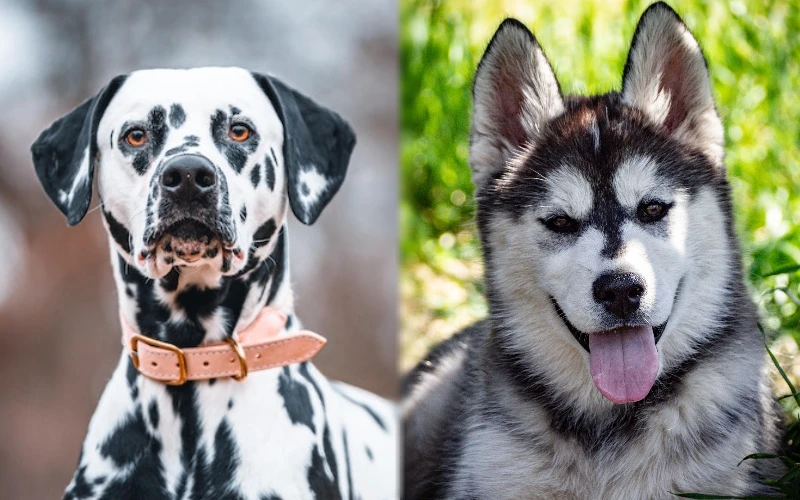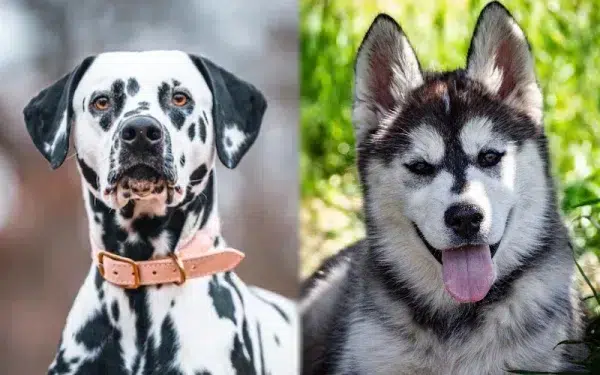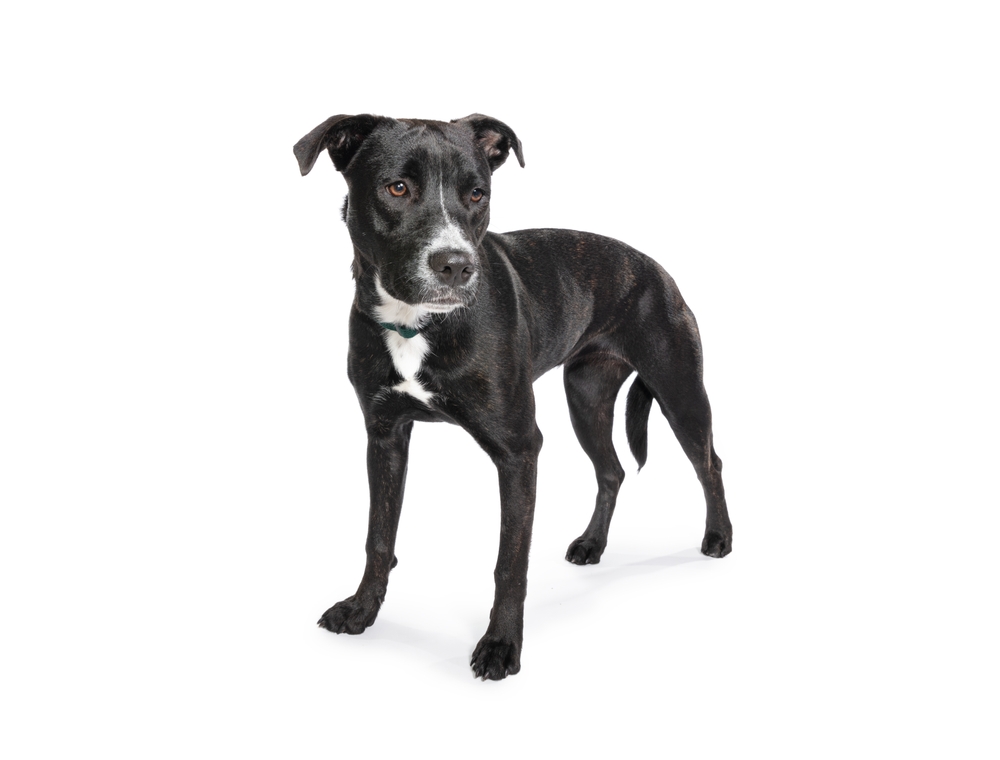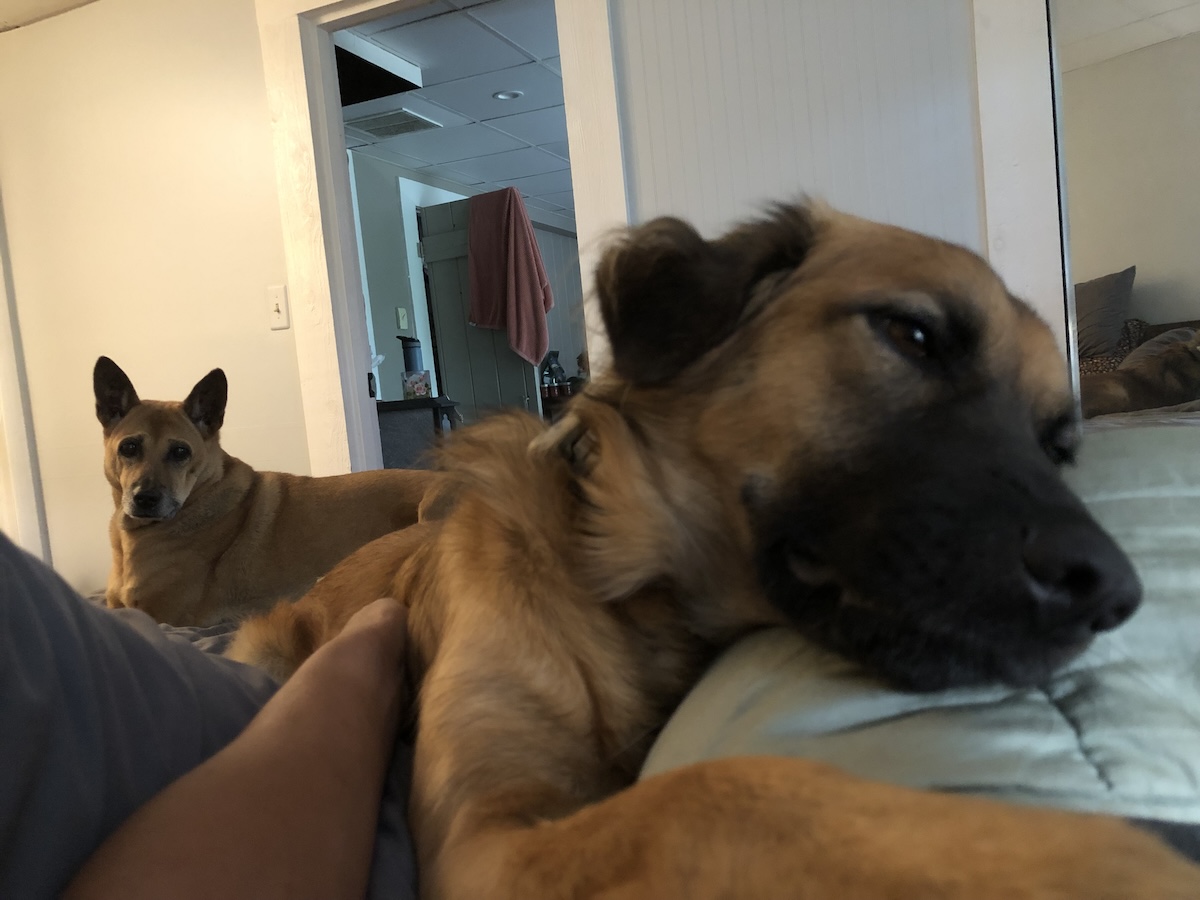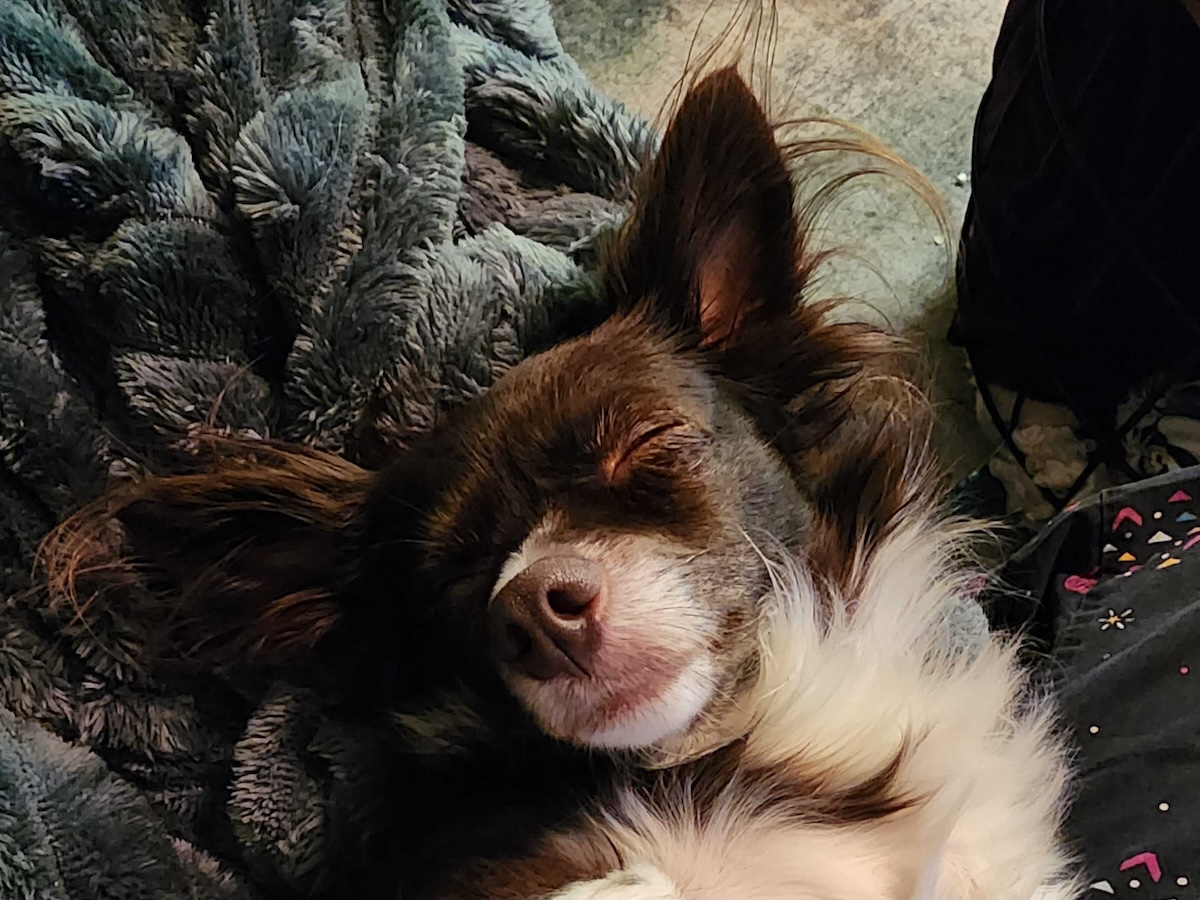Click Below to Skip Ahead
If you’re a dedicated runner looking for a canine partner to join your daily jogs, the Dalusky might be just the dog for you! This unique and energetic hybrid won’t be the best fit for every family but has a lot of love and loyalty for the right owner.
Breed Overview
Height:
19–24 inches
Weight:
35–70 pounds
Lifespan:
11–14 years
Colors:
Solid colors with white, often with black or liver spots
Suitable for:
Experienced and active dog owners
Temperament:
Energetic, loyal, loving with family, may be protective, stubborn
As a deliberate cross between a Dalmatian and a Siberian Husky, the Dalusky is not as well-known as other designer dogs. The most important thing to know about these dogs is that they are energetic, and you’ll need to be prepared to keep up! Besides this trait, you’ll find some variation in the appearance and personality of a typical Dalusky simply because their parent breeds are not that similar.
Are you curious to learn more? Keep reading to learn all about what it’s like to live with a Dalusky.
Dalusky Puppies
The Dalusky is not a common hybrid dog. Dalmatians and Huskies are listed in America’s top 50 most popular dog breeds, but the mix hasn’t quite reached those levels. Because of that, you’re unlikely to find a Dalusky available for adoption.
Expect to do some searching if you’re looking for a Dalusky breeder. Even if you don’t find many options, choose a breeder who performs health screenings on their parent dogs. Because this crossbreed is so rare, puppies will likely cost more than more common hybrids.
Both Dalmatians and Huskies are high-energy dogs, so a Dalusky puppy will need a lot of exercise. Early socialization is key for this breed, especially if they take after their Dalmatian parent. Dalmatians are more protective and suspicious of strangers than Huskies.
You have to establish boundaries and rules early with a Dalusky puppy. They are stubborn and sometimes challenging to train. Don’t let cute puppies get away with behavior you wouldn’t find adorable in an adult dog.
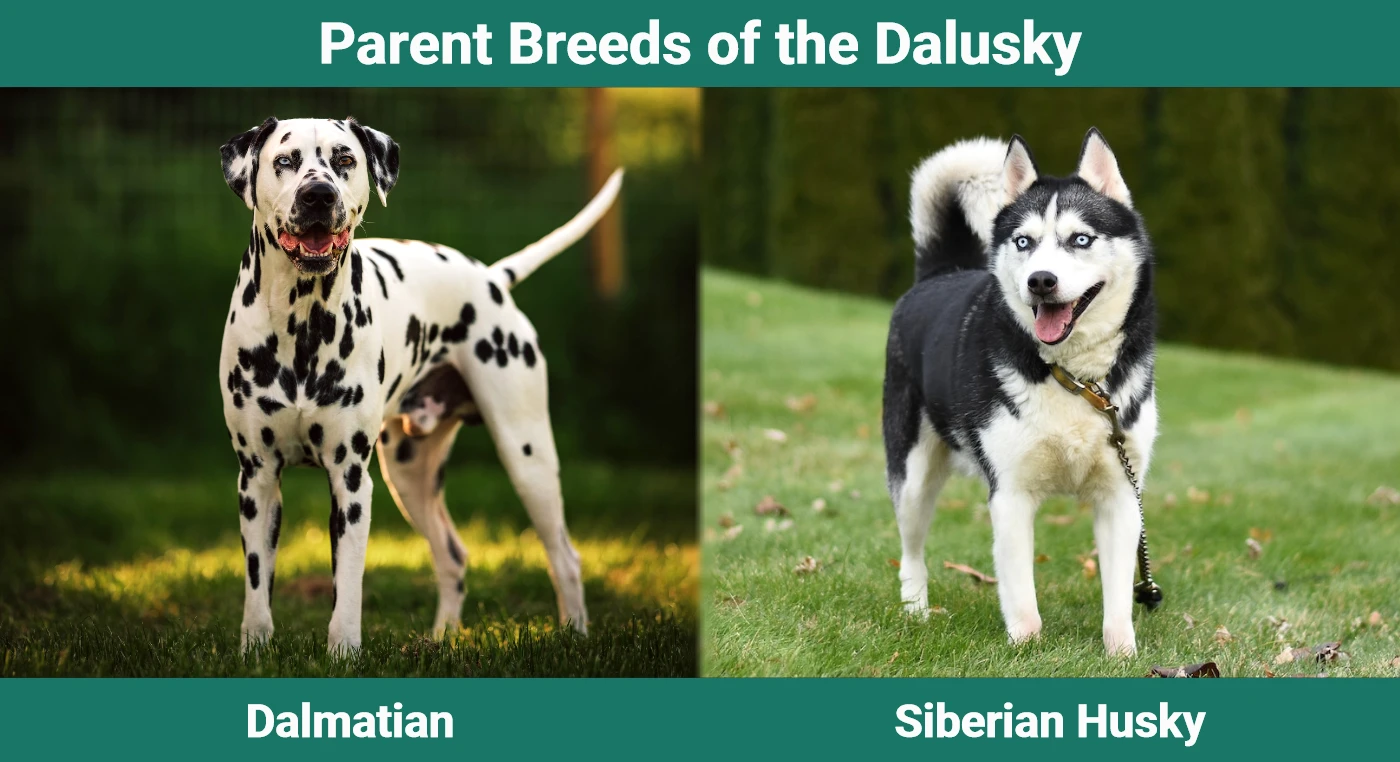
Temperament & Intelligence of the Dalusky
Are These Dogs Good for Families?🏡
Dalusky dogs can be good for families in the right conditions. As mentioned earlier, socialization is vital for this breed to ensure they respond calmly and appropriately to unfamiliar situations. Loud, fast children can be a lot to handle, especially for dogs that aren’t used to them.
With socialization and training, the Dalusky can be a tireless playmate for older children. Supervising all interactions between dogs and kids is best to ensure everyone behaves.
Because of their energy level, the Dalusky may be too much for families with toddlers and small children who are easily knocked over. Busy families may struggle to give a Dalusky as much exercise and attention as they require. This breed typically doesn’t do well if left alone frequently, either.
They are also unsuitable for small spaces and city living because of their high energy levels and exercise requirements. Siberian Huskies are not the quietest breeds, and the Dalusky may inherit this trait from their parent.
Does This Breed Get Along with Other Pets?🐶 😽
Siberian Huskies typically get along with other dogs, while Dalmatians can be aggressive with other canines. It’s hard to predict how your Dalusky will get along with dogs. Socializing your Dalusky puppy with other dogs as much as possible will help.
Introduce your pup to new dogs gradually and supervise them carefully. The Dalusky may not be the best choice for houses with cats and other small pets. Huskies and Dalmatians chase smaller animals, and a Dalusky most likely will too.
Things to Know When Owning a Dalusky
We’ll discuss the Dalusky’s food and diet requirements, exercise needs, grooming details, training requirements, and health issues below.
Food & Diet Requirements🦴
A healthy Dalusky can generally eat any type of nutritionally balanced dog food. You should feed your dog the appropriate diet for their current life stage: puppy, adult, or senior diet. Ask your vet to help you calculate how many calories your dog needs daily based on size, age, and activity level.
Sometimes, a Dalusky may suffer from health problems that require a special diet. If so, your vet can help you select a new food and tell you how to make the transition successfully. Also, make sure your dog always has plenty of water to drink.
Exercise🐕
Dalmatians and Huskies are high-energy dogs that need daily exercise. Regardless of which breed your Dalusky takes after, you can expect to dedicate time each day to tiring your dog out. Dog-friendly Daluskies may enjoy playing with other canines in a safely fenced area.
Other options include hiking, jogging, or participating in canine sports. Both parents were developed to work, and the Dalusky must stay busy, mentally and physically. Without regular activity, a Dalusky may become bored, destructive, and difficult to live with.
When exercising a Dalusky, keep them on a leash or secured behind a tall fence. They love to chase anything they can find and won’t necessarily listen when you call them back.
Training🦮
Dalmatians are more eager to please than Huskies, who are friendly but often stubborn dogs. Because of that, it’s hard to predict how easily trained a Dalusky will be. For the best results, use positive, reward-based training methods.
Getting an early start on training will help your Dalusky grow up to have good manners. Dalmatians are sensitive dogs, so your Dalusky may not respond well to harsh training techniques. Patience and creativity may be needed to train a Dalusky who inherits more of the Husky personality. First-time dog owners may struggle to train a Dalusky but can seek help from a veterinarian or a professional trainer.
Grooming ✂️
Dalmatians and Siberian Huskies could not have more different coats, so a Dalusky’s grooming needs can vary widely. Dalmatians have a short, sleek coat with no undercoat. Siberian Huskies have the thick double coat you’d expect from a breed developed in frigid northern Russia.
Weekly brushing is usually enough to keep a Dalusky’s fur healthy. However, if your Dalusky has more Siberian Husky fur, you can expect seasonally heavy shedding as they “blow” their coat. Keep their nails trimmed short and provide regular preventative dental care.
You can get your Dalusky used to a grooming routine early to make the process easier as they grow. In particular, get your dog used to having their paws and feet handled to avoid stressful (and noisy) nail trims.
Health and Conditions❤️
As a hybrid dog, the Dalusky may inherit health conditions common from either parent breed. Dalmatians and Siberian Huskies are considered healthy breeds, but there are a few medical issues to be aware of. Like many large dog breeds, Siberian Huskies are prone to hip dysplasia.
Dalmatians can suffer from genetic deafness and kidney stones. Siberian Huskies are also prone to juvenile cataracts. When researching breeders, ask if their dogs have had their eyes checked yearly by a specialist.
- Skin allergies
- Cataracts
- Urinary stones
- Hip dysplasia
- Genetic deafness
- Kidney stones
Male vs Female
Male Daluskies are generally taller and heavier than females. Unneutered males may also be more energetic and dominant. They’re likelier to display behaviors like marking and aggression toward other dogs.
Female Daluskies will go into heat twice a year unless they are spayed. Talk to your veterinarian about the best time to spay or neuter your dog.
 3 Little-Known Facts About the Dalusky
3 Little-Known Facts About the Dalusky
1. Their Eyes Can Be One of Their Most Unique Features.
Siberian Huskies frequently have either blue eyes or one brown and one blue. The Dalusky may also display these unique and beautiful eye colors.
2. They Were Born to Run for Long Distances.
Dalmatians were bred to run alongside horse-drawn carriages. Siberian Huskies were developed to pull sleds across frozen terrain. With this kind of heritage, is it any surprise that the Dalusky is the perfect running and hiking partner for an active owner?
3. They Are a New Breed With Ancient Ancestry.
While we don’t know precisely when Daluskies were first bred, it was almost certainly within the last 30 years as “designer dogs” became trendy. Their parent breeds, however, are among the oldest purebred dogs.
Dalmatians have a mysterious origin story, but spotted dogs may have existed as far back as ancient Egypt. Before the world took notice in the early 1900s, Siberian Huskies were bred for generations by a semi-nomadic people called the Chukchi in what is now northern Russia.
Final Thoughts
With any hybrid canine, there’s some uncertainty about how the physical traits and personalities of the two parents will present in their puppy. The Dalusky is no exception, particularly because of the differences between their two foundation breeds. Most likely, you’ll need to devote plenty of time to socializing, training, and exercising a Dalusky to keep them on their best behavior.
Not every dog is the best fit for all living situations and the Dalusky’s unique needs make them most suited to experienced owners.
See Also:
- Dalmador (Dalmatian & Lab Mix): Pictures, Guide, Info, & Care
- German Shepherd Dalmatian Mix Dog Breed Info: Pictures, Temperament & Traits
Featured Image Credit: Left – Jozef Fehér, Pexels | Right – Saira Sustaita, Unsplash

